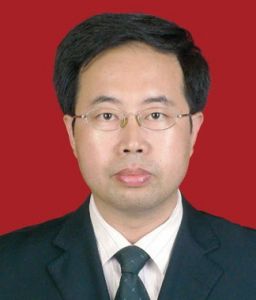
社会科学文献出版社 2013-08出版
走共享型融合发展之路:莱芜市统筹城乡发展研究

先晓推荐
相关海报
详情
展开
莱芜市作为山东省统筹城乡发展改革试点城市,以统筹城乡发展作为加快转变经济发展方式的重要突破口,提出了“六个一体化、三个集中、两股两建和四个体系”的创新发展思路,初步构建了城乡体制基本接轨、产业相互融合、社会协调发展、差距明显缩小的发展新格局,形成了具有莱芜特色和示范带动效应的“共享型融合发展模式”。本书对莱芜市统筹城乡发展的背景、基础、做法和经验进行了深入的研究总结,对其统筹城乡发展的绩效进行了量化评价,在此基础上分析了“莱芜模式”的本质及其借鉴意义,提出了进一步推进莱芜市城乡统筹发展的思路、重点任务和政策措施。
本书共分为九章和两个附录,第一章“总论”概括了各专题研究的核心内容,提出了未来莱芜市应依托城乡统筹发展的良好基础,创新体制机制,发挥比较优势,继续深化共享型融合发展模式,实施“民生优先、城乡互动、融合发展、创新引领、开放带动”五大战略,不断提升城乡统筹水平。第二章“莱芜市城乡统筹的成效及共享发展评价”通过建立共享发展指数,对莱芜市以及山东省17个省辖市共享发展程度进行量化测算。第三章“莱芜市统筹城乡发展模式”对莱芜市统筹城乡发展模式的本质及借鉴意义进行了概括。第四章“莱芜市城乡一体化发展”对莱芜市城乡一体化发展状况及推进战略进行了分析。第五章“莱芜市统筹城乡产业发展”从城乡一体化角度,考察了莱芜市城乡产业统筹发展的进展和战略思路。第六章“莱芜市空间结构优化与城乡建设”从空间发展的角度,考察了莱芜市城乡空间结构优化和融合发展的进展、成效及战略选择。第七章
“莱芜市共享型融合发展的机制特征”分析研究了莱芜市共享型融合发展的基本特征、实施机制和突破路径。第八章“莱芜市农村产权制度改革探索”从农村产权制度改革角度,总结了莱芜市统筹城乡发展中农村产权制度改革的主要做法、成效和基本思路。第九章“莱芜市统筹城乡发展支撑体系”在总结莱芜市统筹城乡发展的支撑体系建设状况的基础上,提出了进一步提升莱芜市统筹城乡发展的支撑能力的设想和建议。“附录一”记录了对莱芜市统筹城乡发展的问卷调查结果,包括村庄问卷调查分析、农户问卷调查分析和农民工问卷调查分析。“附录二”为村庄、农户和农民工调查问卷。
As the reform pilot city of coordinating urban and
rural development in Shandong Province, Laiwu takes urban and rural coordinative
development as vital breakthrough in transforming development pattern. Laiwu
put forward the new developing thought of “Six integration, three
concentration, two forms of shareholding reform (stocklization of land
contracted management right and emutualisation of country collective assets)
and two forms of construction pattern (new agricultural cooperative and
urban-rural construction land circulation) and four support systems”,
preliminarily forming a new pattern with urban and rural areas coordinated,
various industries integrated, society compatibly developed and disparities
significantly reduced. This provides Laiwu with “A Sharing-type Integrated
Development Model” with the city’s own features and demonstration effect. This
book makes a deep investigation and summary on the background, foundation,
measures and experience of coordinating urban and rural development in Laiwu
with a quantitative evaluation on its effects. Based on the research above,
this book analyzes the essence and practical significance of “Laiwu Model” and
raises the thoughts, essential tasks, and policies of further promotion of
coordinating urban and rural development.
This book is divided into nine chapters and two
appendixes. Chapter 1 “General View” provides a summary of the core content of
each topic, raising the points that Laiwu should rely on the sound foundation
of coordinating urban and rural development, innovate the mechanism, take the
comparative advantages, and further promote sharing-type integrated development
model. Laiwu should also put five strategies into practice: (1) Take the issues
concerning people as the priorities; (2) Promote the interaction between urban
and rural areas; (3) Promote integrated development; (4) Take innovation as the
leading factor; (5) Promote development through opening up.
Chapter 2 “The Performance of Coordinating Urban
and Rural Area and Evaluation on Shared Development in Laiwu” mainly focuses on
the quantitative evaluation of shared development degree in Laiwu and 17
prefecture-level cities in Shandong through building up shared development
index. Chapter 3 “The Model of Coordinating Urban and Rural Development in
Laiwu” describes the essence and practical significance of Laiwu’s coordinating
urban and rural development model. Chapter 4 “Urban and Rural Integrated
Development in Laiwu” analyzes the situation of urban and rural integrated
development in Laiwu and its promotion strategy. From the angle of urban and
rural integration, Chapter 5 “Coordinating Development of Urban and Rural
Industry in Laiwu” studies the progress and strategy of urban-rural industry
coordinative development. From the angle of space development, Chapter 6 “The
Spatial Structure Optimization and Urban-rural Construction in Laiwu” focuses
on the progress, performance and strategic choices of urban-rural spatial
structure optimization and integrated development in Laiwu. Chapter 7 “The
Mechanism and Features of Sharing-type Integrated Development in Laiwu”
analyzes the basic features, implementation mechanism and breakthrough path of
sharing-type integrated development in Laiwu. From the angle of rural property
rights system reform, Chapter 8 “Exploration on Rural Property Rights System
Reform in Laiwu” summarizes the main measures, effects and basic thoughts of
Laiwu’s rural property rights reform in the coordinated development of urban
and rural area. Chapter 9 “Support System of Coordinating Urban and Rural
Development in Laiwu” raises the ideas and suggestions of further promotion of
coordination development support ability based on the summarizing of the
support system. Appendix 1 records the results of questionnaires studies of
coordinating urban and rural development in Laiwu, including questionaries
analysis of villages, peasant households and peasant-workers. Appendix 2
records the questionnaires of villages, peasant households and peasant-workers.
展开
内容资源
第一章 总论/001
一 莱芜市统筹城乡发展的背景和基础/001
二 莱芜市统筹城乡发展的做法和经验/007
三 莱芜市统筹城乡发展的绩效评价/015
四 “莱芜模式”的本质及其借鉴意义/020
五 深入推进莱芜市城乡统筹发展的思路/028
六 深入推进莱芜市城乡统筹发展的重点任务/031
七 深入推进莱芜市城乡统筹发展的政策措施/042
第二章 莱芜市城乡统筹的成效及共享发展评价/047
一 莱芜市统筹城乡发展取得显著成效/047
二 莱芜市统筹城乡发展面临的问题/063
三 莱芜市城乡共享发展评价体系与测算/065
四 莱芜市统筹城乡发展绩效总结/076
第三章 莱芜市统筹城乡发展模式/080
一 莱芜市统筹城乡发展的主要做法/080
二 国内外统筹城乡发展模式借鉴/087
三 莱芜市统筹城乡发展模式的本质/091
四 莱芜市统筹城乡发展模式经验总结及借鉴意义/096
第四章 莱芜市城乡一体化发展/101
一 莱芜市城乡一体化发展现状/101
二 莱芜市城乡一体化发展的特点/104
三 莱芜市推进城乡一体化的经验与存在的问题/114
四 莱芜市推进城乡一体化发展的主要任务/117
五 推进莱芜市城乡一体化发展的保障措施/125
第五章 莱芜市统筹城乡产业发展/128
一 莱芜市产业发展现状及面临的挑战/128
二 莱芜市统筹城乡产业发展的做法和经验/131
三 莱芜市统筹城乡产业发展的思路和任务/135
四 莱芜市统筹城乡产业发展的政策措施/142
第六章 莱芜市空间结构优化与城乡建设/145
一 莱芜市空间发展的现状特点与问题/145
二 莱芜市空间规划与城乡建设的战略目标/151
三 莱芜市推进城乡空间融合发展的主要做法/160
四 莱芜市空间结构优化与城乡建设的经验和不足/167
五 莱芜市推进空间结构优化与城乡建设的战略选择/169
第七章 莱芜市共享型融合发展的机制特征/174
一 莱芜市共享型融合发展的基本特征/174
二 莱芜市共享型融合发展的实施机制/181
三 莱芜市共享型融合发展面临的机制制约与突破路径/185
第八章 莱芜市农村产权制度改革探索/190
一 莱芜市农村产权制度改革的历史条件分析/190
二 莱芜市农村产权制度改革的主要做法/198
三 莱芜市深化农村产权制度改革的主要成效/206
四 莱芜市深化农村产权制度改革的基本思路/211
五 莱芜市深化农村产权制度改革的对策建议/215
第九章 莱芜市统筹城乡发展支撑体系/220
一 莱芜市统筹城乡发展支撑体系建设的主要内容/220
二 莱芜市统筹城乡发展支撑体系建设的主要成效/227
三 莱芜市统筹城乡发展支撑体系建设面临的挑战/234
四 加强莱芜市统筹城乡发展支撑体系建设的措施/237
附录一 莱芜村庄、农户和农民工问卷调查分析/241
附录二 莱芜村庄、农户和农民工调查问卷/274
参考文献/288
后 记/294
请选择图书

- 1.0
- 1.5
- 2.0
- 3.0










